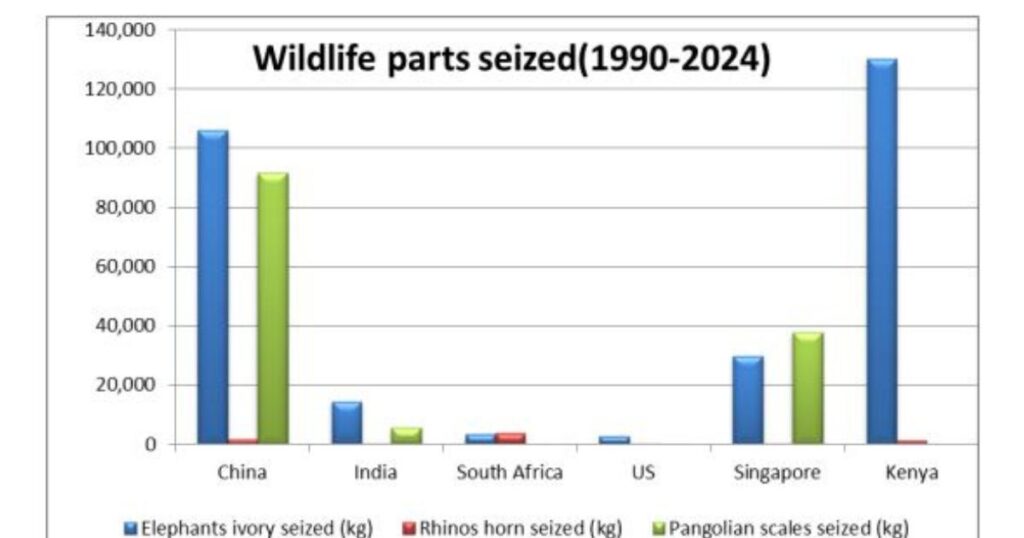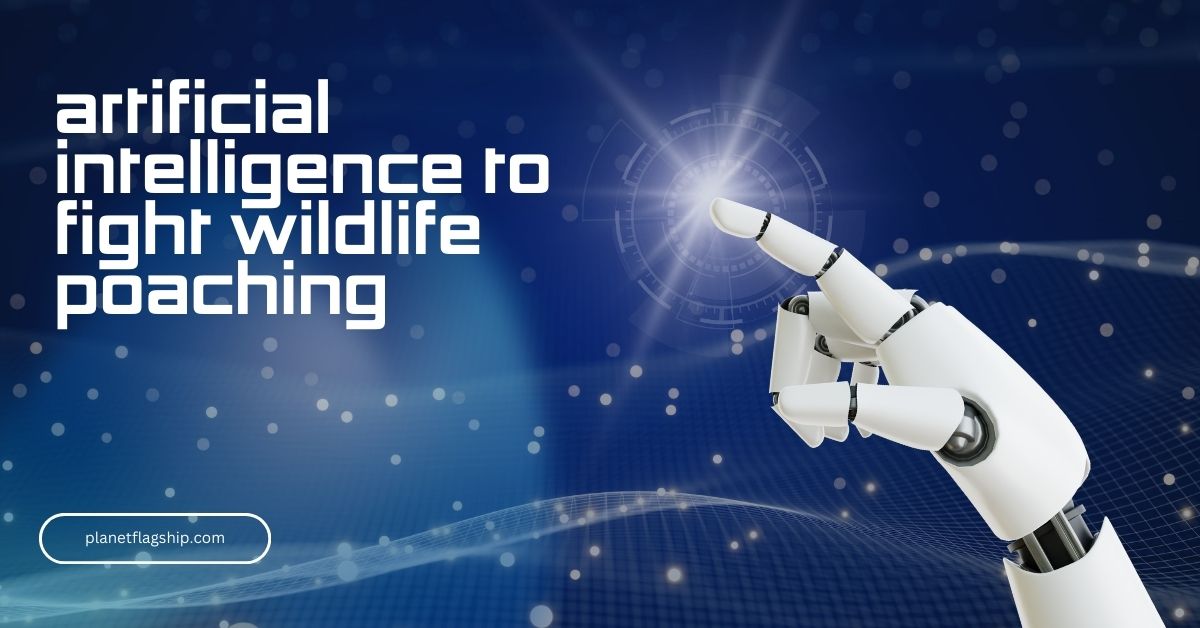Introduction
The illegal capturing of wildlife is called poaching, including killing animals out of season, without a license, or using banned methods.
Artificial Intelligence to Fight Wildlife Poaching is a giant business. International networks run this business for trading animal parts, just like the smuggling of drugs and weapons. This business is so dynamic that exact figures are impossible to determine, but it’s estimated to be worth billions. The loss of these key species threatens ecosystem stability and disrupts food chains. Combined international efforts and public awareness are key to fighting poaching and conserving endangered wildlife.
The transformation of wildlife conservation through the use of AI is possible due to its ability to process vast amounts of data and identify patterns. The technologies of machine learning and predictive analytics for image recognition are capable of empowering conservation drivers to monitor wildlife more efficiently and identify poaching threats. Furthermore, we will discuss the ‘hellholes’ of poaching, the drawbacks of traditional poaching methods, the use of AI as a tool to combat poaching, the moral and ethical concerns associated with using AI, and the prospects of AI in controlling wildlife trafficking.
Poaching: A planetary challenge

Hellholes of Poaching:
These areas are particularly referred to as “wildlife trade hotspots.” They include the international borders of China, trade centers in East/South Africa and Southeast Asia, the European Union’s eastern borders, some markets in Mexico, some areas of the Caribbean, parts of Indonesia and New Guinea, and the Solomon Islands. (What is poaching? The illegal wildlife trade explained)
We lose three species per hour; experts refer to this as Earth’s sixth mass extinction event. It’s peerless and the freshest extinction model. South Africa and Asia experience alarming rates of illegal killings driven by the ongoing demand for products such as elephant ivory, rhino horn, and tiger parts. The population of rhinos in South Africa’s Kruger National Park has reduced by 60% due to illegal trafficking, with Africa facing a two-decade peak in rhino hunting by 2015.
The biodiversity crisis is exacerbated by poaching, which threatens the survival of key species, including tigers, gorillas, and pangolins.
Kenya is specifically famous for hunting giraffes for their hair, meat, and bones. Elephant tusks are also a type of asset, appraised for their ivory.
South Africa is facing the killing of elephants on a large scale per day. Botswana is leading in poaching rates, as 35,000 elephants are hunted each year. In Uganda, there is a boom in hippo deaths and an increase in the trade of illegal elephants and rhinos. And in Angola, giraffes are the key asset, and two dozen are killed each year.
India’s poaching industry centers on tigers.
China has the world’s highest rate of pangolin poaching, approximately 3 million annually. But the animal most commonly targeted in both China and Vietnam for its
The horn is the rhino.
For traditional remedies, poaching is also common in the United States, particularly for meat, trophies, and medicinal purposes. Deer, elk, and bears are involved in the illegal trade.
In Pakistan, markhor and snow leopards are most commonly targeted for illegal hunting.
READ MORE: Chemical Pollution: How It’s Silently Damaging Human Health
Restraints in conventional anti-poaching practices
Traditional anti-trafficking approaches, including military patrols, ranger implementation, and basic inspections, are facing numerous constraints that hinder their lasting efficacy.
a. Human Rights violation
There are expanding apprehensions that militarized conservation, often defined as ‘the use of military and unofficial workers, modes, mechanizations, and collaborations in the tracking of protection,’ is often causing human rights intrusion, often brutal prolongation of exclusionary pure practices, operations of protection, and the further oppression of already unsafe people.
b. Lack of community engagement
Continuous traditional anti-trafficking measures that mainly revolve around human labor and technology cannot control the societal and economic constraints connected with poaching. There should be ways to cooperate with indigenous communities to effectively address the core issues.
c. Corruption and weak legal practices
The persistent ignorance required to implement and enforce laws and judicial systems undermines efficient anti-poaching efforts. For example, well-connected Black traders use the tactic of bribery to avoid advocacy. Similarly, lack of resources and weak legal practices lead to low persuasion rates for wildlife crimes.
AI: a tool to overcome poaching
We have already reached a point where technological advancement must be a leading tool for the way forward. AI detection systems can transform wildlife conservation practices. Now, it is possible to predict the most vulnerable areas where poaching is likely to occur using AI-provided datasets. It can aid us in planning responsible investment in the most vulnerable areas and in predicting incidents before they happen.
Online websites or e-commerce platforms have replaced traditional trafficking methods, making their inspections more complex. AI-powered systems, aligned with conventional conservation strategies, provide us with an integrated way to address this complex problem.
AI-Powered Predictive Analytics Systems

The implementation of cutting-edge AI-powered systems has revolutionized approaches to addressing poaching incidents.
a) How PAWS (Protection Assistant for Wildlife Security) Works
PAWS generates appropriate information by processing complex datasets. The system breaks conserved regions into 1-kilometer squares and identifies the poaching risks associated with each part.
b) Machine Learning Models for Threat Detection
Forecasting accuracy can be enhanced with each data point by using a machine learning system. The application of advanced game theory suggests that conservation efficiency can be enhanced by optimizing the use of limited resources. For example, in Cambodia, AI-integrated patrol practices have eliminated snares five times more effectively than traditional methods.
c) Real-time Data Processing and Analysis
This AI prediction tool delivers real-time results by simultaneously handling multiple data streams and analyzing geographical data, weather patterns, and previous incident reports collectively. The technique of cloud computing integration facilitates addressing connectivity issues in remote areas, while also providing uninterrupted data processing and real-time threat alerts to rangers.
d) Passive acoustic monitoring (PAM)
Passive Acoustic Monitoring (PAM) works by employing hidden sensors in forests, oceans, or parks, which continuously record environmental sounds. AI is used to detect sounds of firings, chainsaws, and transportation in real-time; identify species by the vocalizations of animals, including elephants, whales, or primates; and also provide alert signals to rangers for rapid response.
e) Space imagery and surveillance

Satellite imaging, combined with AI and big data analytics, is enabling conservation efforts to be conducted more efficiently. Procedures provided by AI can handle vast amounts of data, identifying models and anomalies that could pose risks to wildlife or their habitats. This automation facilitates informed decision-making and ensures that resources are allocated effectively.
Moral conflicts and obstacles
- There are risks of privacy intrusion into local communities, including local people and tourists, around conservation areas through the use of patrolling cameras and remote satellites. It is crucial to strike a balance between privacy rights and security.
- There is no evidence regarding the entities behind data collection through these technologies, including governments, NGOs, local communities, or tech companies. There are risks of data misuse or data leakage.
- AI models can produce false results due to biased data, leading to the misidentification of humans or wildlife. A resident can be falsely accused of being a poacher.
- AI tools integrated with militarized practices, leading to armed conflicts with suspected hunters, which may result in violence and worsen poverty-dring.
FAQ’s
How is AI used to fight wildlife poaching?
AI is transforming conservation by predicting poaching hotspots, analyzing satellite images, and detecting threats in real-time. Machine learning models process vast datasets to guide ranger patrols more effectively. Tools like acoustic sensors even pick up gunshots or chainsaws, alerting teams instantly.
What is PAWS in wildlife conservation?
PAWS (Protection Assistant for Wildlife Security) is an AI-powered system that divides conservation areas into grids and predicts poaching risks for each section. It helps rangers prioritize patrols where threats are highest. In practice, PAWS has significantly reduced poaching attempts in multiple regions.
Why are traditional anti-poaching methods less effective?
Conventional approaches rely heavily on human patrols, which face challenges like corruption, weak legal enforcement, and limited resources. Militarized strategies also raise human rights concerns. Without community engagement and advanced tools, these methods struggle to address the root causes of poaching.
What role does satellite imagery play in stopping poaching?
AI-enhanced satellite imaging scans vast landscapes to detect suspicious activities or environmental changes linked to poaching. It spots unusual movements, hidden camps, or habitat destruction. These insights allow conservationists to respond quickly and allocate resources efficiently.
What ethical challenges come with using AI in conservation?
While AI boosts wildlife protection, it also raises concerns about privacy, data misuse, and false identification. Local communities worry about surveillance and potential misuse of collected information. Ethical use of AI requires transparency, fairness, and collaboration with affected communities.
Conclusion
AI is transforming wildlife protection by advancing species tracking, preventing trafficking, and maintaining habitat. These advancements are helping conservationists protect biodiversity and address significant challenges such as habitat rehabilitation and illegal wildlife trafficking. However, the incorporation of AI also raises moral and societal concerns, including data security and its impact on residents.
By embracing AI responsibly and fostering collaboration among stakeholders, the preservation community can unlock its full potential to create a more sustainable and equitable future for wildlife and ecosystems. The future requires not only a technological revolution but also a focus on ethical considerations and anthropocentric design. Together, we can harness the power of AI to build a smarter and more inclusive approach to wildlife conservation.
Bibliography
Abed, N. (n.d.). IoT and AI-driven solutions for human-wildlife conflict: Advancing sustainable agriculture and biodiversity conservation.
Lin, D. (n.d.). What Is Poaching? An Overview. Retrieved from Treehugger sustainability for all: https://www.treehugger.com/overview-of-poaching-127892
Masse, F. (2017, June). Inclusive Anti-poaching? Exploring the Potential and Challenges of Community-based Anti-Poaching.

John is a professional blogger and passionate advocate for environmental sustainability. With years of experience exploring eco-friendly practices and green innovations, he shares insightful articles on Planet Flagship to inspire a sustainable future. John’s expertise lies in making complex environmental topics accessible and actionable, empowering readers to make meaningful changes for the planet.
